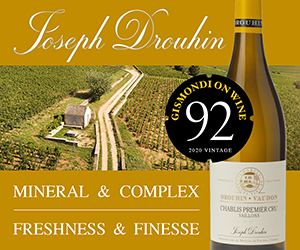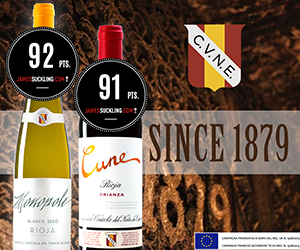Another grape-growing and wine-producing season is on us inBritish Columbia and there is little to suggest the vast Okanagan Valley willbe carved into a number of smaller, sensible sub-regions that relate to theorigin of where grapes and wines are produced before the next harvest.
A small band of estate winery owners are indignant that theword Canada or the term Canadian appears on an enormous number of wine bottlessold in Canada that contain little or no Canadian-grown fruit. The renamedInternational Canadian Blended wines, or ICB (formerly CiC or Cellared inCanada) are a major irritant to flag-waving estate winery producers even ifthere seems to be little movement by the same producers to strengthen whatreally matters: the authenticity of place names and sites of the vineyards andwines they are making.
Let me dismiss ICB wines for what they are, a deceptive,money grab. ICB wines are not a threat to authentic Canadian wine, grown andfermented in Canada's vineyards and that sell at double, if not three or fourtimes the price of any ICB label. Usurping the word Canadian and using it oninternational blends is at least despicable, but read the federal legislationregarding made in Canada or produced in Canada, not to mention the French orEurope equivalents. In the end, the definition really has nothing to do withwhat our estate-based, artisanal wine producers are creating.
Depending on the province where it is assembled,international Canadian blended wines is a category of wine that is producedwith varying quantities of bulk foreign wine and possibly some Canadian juice.In B.C., no Canadian content is required in ICB wine. B.C.-grown grapes are fartoo expensive to be dumped into cheap ICB wine, which is why it rarely happens.
In Ontario, as of April 1, wineries that existed prior to1993 must use a minimum 25-per-cent Ontario wine in the blend. Ontario stillhas a provincial grape marketing board that protects plenty of inferior grapesthat would never make it into any of Ontario's top-flight wines. Hence themandated 25 per cent keeps the protected growers happy and doesn't reallyaffect artisanal producers other than taking valuable vineyard space forinferior grapes.
ICB producers are currently seeking relief from the excisetax they pay on that portion of ICB blends that is Canadian. The big boys theyare relentless. The trick is to separate yourself from the category, whichbrings me to the Okanagan. Estate producers need to be better organized andpush hard for an authenticity mantra.
Since the start of the modern era of B.C. wine, we have beensaying industry (and government) should be moving to map the country'svineyards and creating legislation that clearly defines our wine-growingregions, sub-regions and vineyards.
The real strength of VQA has been in identifying 100 percent B.C. wines for consumers, not guaranteeing quality. Why not revamp VQA toguarantee the origin of every wine produced in British Columbia and a fewstandard wine-making practices. Consumers will always decidee about quality butthere's no reason they should question the origin of any wine made in BritishColumbia.
We have towns and villages and vineyards. How hard is it torecognize the sites and the producers using them? We don't need to be Burgundy,but if a Naramata producer makes a wine in Oliver, why can't we recognize thaton a label? If the wine is a blend of Naramata and Oliver fruit, an OkanaganValley designation will do. The point is to be as specific as possible andverify each bottle religiously.
The only way to combat trickery and deceit in wine is withauthenticity and origin. Most wine drinkers spending more than $20 on a bottleof wine are buying a region, or sub-region and/or a producer. All we need to dois deliver that commitment and message on every label of local wine. Once weget our house in order, we may have more success convincing Ottawa that theword Canada deserves much more respect than it's currently recieving on wine labels.
Freixenet Cordon Rosado Cava Selección N/V, Sant Sadurní d'Anoia, Penedès, Spain
Price $15 | Score 87/100
UPC: 00088601002005
Attractive salmon-coloured fizz with a fresh floral, red berry and bay leaf nose. The flavours are similar, crisp with a strong mineral thread throughout. As always, an impressive dry sparkler that is as versatile with food as any in its price category. Psst: try prawns.
Anko Torrontés 2012, Salta, Argentina
Price $17 | Score 87/100
UPC: 00859481003082
Expect an exotic mix of spicy, honey, apricot and lemon oil with ginger highlights. The attack is dry with more lemon oil, apricot skin, ginger, spicy, grassy, sausage and earth flavours. A richer style with some persistence. Try this with pork and other white meats or your favourite curry.
Remy Pannier Sauvignon Blanc di Touraine 2012, Loire, France
Price $17 | Score 87/100
UPC: 03221580037799
Expect a pure, fresh grapefruit nose with flecks of passion fruit and gooseberry aromas. The attack is all Touraine: fresh, juicy, floral, grassy, passion fruit with lime-rind undercurrents. This is a ery food-friendly style, midweek white for those who appreciate pure, dry, white wine. Chicken, seafood, sushi all work here.
Dialogo Tinto 2011, Douro Valley, Portugal
Price: $20 | Score 87/100
UPC: 5602840078659
Douro reds are rich in cherry/cassis and licorice aromas flecked with sage, fig, tobacco and earth. Expect a fresh, juicy, slightly lean palate with light tannins and savoury, black cherry, resin, licorice and warm fig flavours. There is big intensity and still some youthful tannins that call for grilled meats.
Zuccardi Q Tempranillo 2011, Santa Rosa, Northern Region, Mendoza, Argentina
Price: $20 | Score 88/100
UPC: 7791728020618
Love the licorice, cherry jam, vanilla chocolate aromas. The attack is dry and juicy with some grippy tannins and more spice, licorice, blood orange, savoury, celery-salt flavours with a touch of vanilla. A bit youthful but with fine fruit, acidity and concentration. This will need another year or two in bottle but try now with grilled lamb chops.
Cameron Hughes Lot 403 Pinot Noir 2012, Napa Valley, California, United States
Price $25 | Score 88/100
UPC: 845517004031
Typical Russian River richness, beginning with a spicy nose of black cherries. The flavours are ripe, reflecting the vintage with a mix of earthy, pronounced, black cherry fruit and soft, round, mouth-filling texture that sings New World pinot noir. Good value in a ready-to-drink pinot for duck or salmon.

 quicksearch
quicksearch






